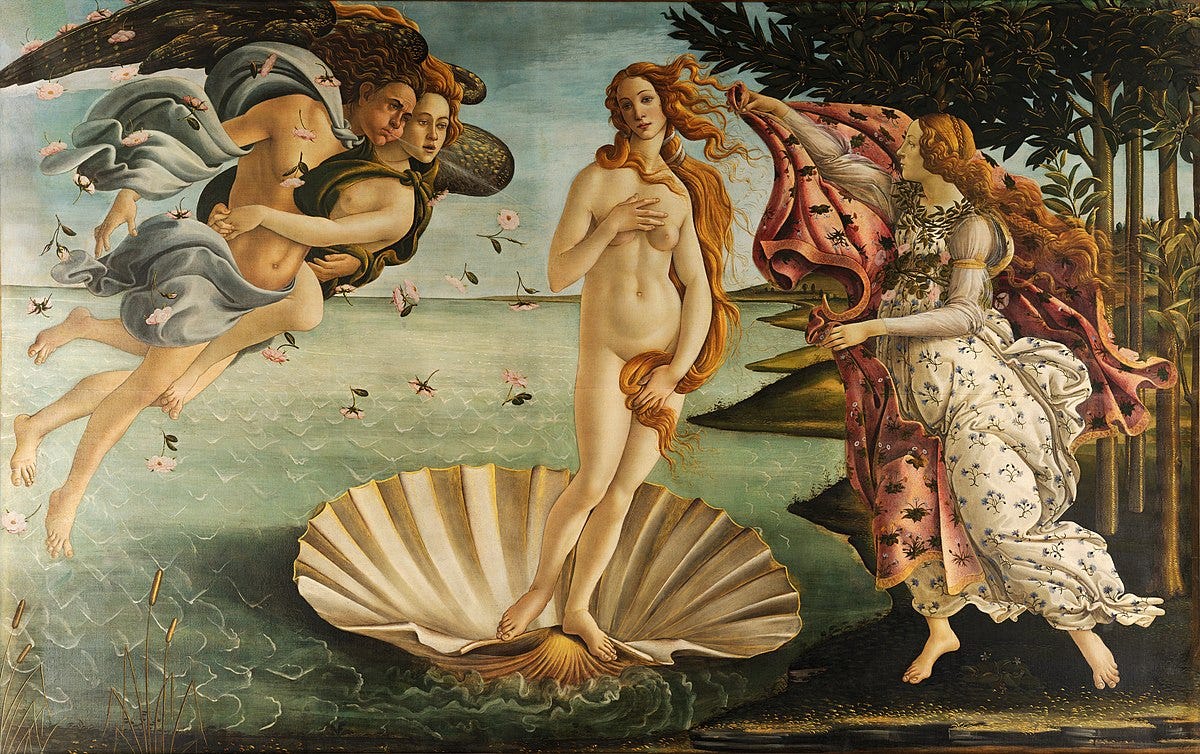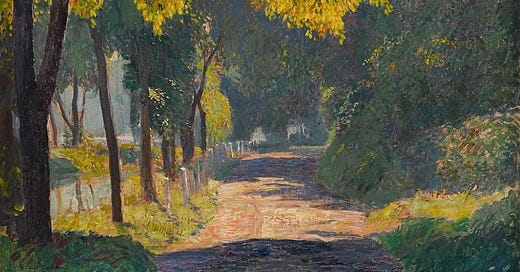⌾Curio #34 - Daniel Pink, Stendhal Syndrome & Anoushka Shankar
Dear readers,
I’m writing to you from a quiet house on the outskirts of the town of Shickshinny (pop. ~800) in northeastern Pennsylvania, about a forty-five minute drive from Scranton airport. The reason I’m here and not in North Carolina anymore is that my aunt and uncle in Raleigh are about to move back to Australia after almost twenty years of living overseas, so I couldn’t stay there. With New York still looking distinctly apocalyptic, I decided it was best to come here and stay with a friend.
Shickshinny is an interesting little town. It’s located in old Pennsylvania coal country, who’s glory days were in the late nineteenth and early twentieth century. According to the census, the population peaked in the 1920s and 1930s and has been gradually declining ever since. Indeed, for those who don’t own a shop or restaurant in the town center (which looks like an old Hollywood set), it’s not clear what people here do for work. While it certainly has a peaceful and picturesque charm, Shickshinny also contains an undercurrent of decay and a sense of having been left behind. From all accounts, this is common throughout the working-class Rust Belt.
The house itself is a time capsule. It feels as if an old man were living here in the 1950s and decided to walk out one day and never come back. On my bedside table are an ancient harmonica and an “I Like Ike” campaign pin for President Eisenhower’s 1952 run. The furniture, wallpaper and decorations are from the middle of the twentieth century at the very latest. A hefty leather-bound bible next to the dining room table is from 1870. The cupboards are filled with antique clutter and knick-knacks. Every room has at least three clocks, none of which work — each symbolically frozen in time. There’s no internet. Connecting to the outside world has meant hot spotting my weak T-Mobile signal. There are two rifles in a hallway cupboard. There’s even an underground bunker, as if to defend against an imminent Soviet nuclear attack.
It is beautiful here, though. The house is surrounded by trees and mountains and the fresh air is cool and sharp. Spring is on the cusp of fully arriving. I went for a walk in the woods this morning next to a gorgeous river that glistened in the sun and didn’t see another soul.

Daniel Garber - The River Road
—
On another note, starting next week I’ve decided to change the day I send out Curio back to a Friday. I hope this suits you all. The anecdotal evidence seems to be that people are more likely to be in the frame of mind for reading Curio with the weekend approaching.
I hope you’re staying happy and healthy.
Until next time,
Oli
Curio is a newsletter for curious minds seeking an escape from the noise of the news cycle. If you enjoy reading it, feel free to send it to others you think might also like it.
Daniel Pink on What Motivates Us
Daniel Pink is a former policy advisor and speechwriter who transitioned into becoming a bestselling author. In 2009, he published a popular book called Drive: The Surprising Truth About What Motivates Us, in which he draws on the best scientific, economic and psychological research to attempt to explain what motivates people at work.

Pink was also the host and co-executive producer of the 2014 National Geographic Channel social science TV series Crowd Control
—
In essence, Pink’s research shows that human motivation is less about financial incentives than we think. Once a basic threshold of paying people enough “to take the issue of money off the table” has been achieved, it appears higher financial incentives result in better performance only if the task or job in question consists of basic, mechanical skills with a defined set of steps and a single answer. However, if a task or job involves cognitive skills, decision-making, creativity, or higher-order thinking, more pay actually results in worse performance.
Pink argues that to truly motivate employees who work beyond basic tasks requires these three elements:
Autonomy — The desire to be self-directed
Mastery — The urge to get better skills
Purpose — The desire to do something that has meaning
If you’re interested in learning more, instead of reading Pink’s book, you can watch this fascinating video which summarises his entire thesis in just a few minutes:
Stendhal Syndrome
In 2018 an Italian man suffered a heart attack while standing in front of Botticelli’s The Birth of Venus in the Uffizi Gallery in Florence. He eventually recovered in hospital but was just the latest case of what’s known as Stendhal Syndrome, a medical condition to describe those who collapse after looking at beautiful artwork. It’s also known as Florence Syndrome, due to its unique frequency in the Tuscan city.

The Birth of Venus by Sandro Botticelli
—
Dr. Graziella Magherini, the Chief of Psychiatry at the Hospital of Santa Maria Nuova in Florence during the 1970s and 80s, coined the term “Stendhal Syndrome” after years of observing people being hospitalized after looking at art. In her 1989 book about the phenomenon, she describes how she named it after a French author known by his pen name ‘Stendhal’ who, in the early nineteenth century, wrote about his experience of seeing the Basilica of Santa Croce in Florence for the first time. The sublime beauty physically overwhelmed him and he experienced heart palpitations and weak, shaky legs:
"I was in a sort of ecstasy, from the idea of being in Florence, close to the great men whose tombs I had seen. Absorbed in the contemplation of sublime beauty...I reached the point where one encounters celestial sensations ... Everything spoke so vividly to my soul. Ah, if I could only forget. I had palpitations of the heart, what in Berlin they call 'nerves.' Life was drained from me. I walked with the fear of falling."

The Basilica of Santa Croce in Florence
—
The symptoms of Stendhal Syndrome range from fainting, anxiety, panic attacks, hallucinations, and even psychotic episodes.
It’s rumored the staff at the Uffizi gallery are trained in how to deal with collapsing visitors.

Michelangelo’s David
—
(I’ve even heard reports that people collapse upon reading Curio, but they've yet to be confirmed.)
Anoushka Shankar
Watching Anoushka Shankar play the sitar is a joy. I like this track, Lasya, as it showcases her lively and dextrous technical mastery. In Hindu mythology, the term Lasya describes the dance performed by the Goddess Parvati and is intended to express happiness, grace and beauty. Lasya appeared in Anoushka Shankar’s 2013 album, Traces of You, which was a tribute to her famous father, Ravi Shankar, and eventually nominated for a Grammy award.
“Humans are not wired to be constantly wired”
- Cal Newport
Curio is a newsletter for curious minds seeking an escape from the noise of the news cycle. It is put together by Oli Duchesne



